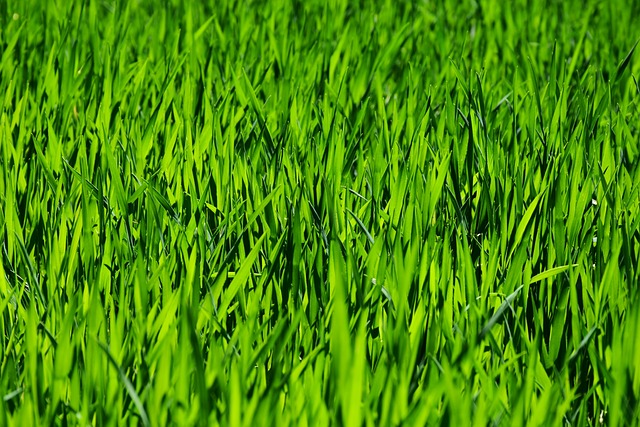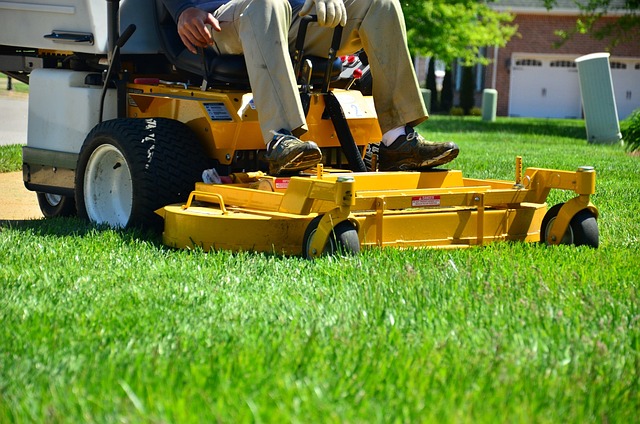Mulching and edging are essential practices in lawn care and landscaping, offering multiple benefits. Mulch conserves moisture, suppresses weeds, and promotes root growth, while precise edging defines lawn boundaries for a polished look. Integrating these strategies creates a lush, healthy lawn, with optimal timing according to seasonal changes ensuring standout results.
Transform your lawn from ordinary to extraordinary with mulching and edging—essential techniques in lawn care and landscaping. This comprehensive guide explores the art and science of these practices, revealing how they enhance your yard’s beauty and health. Discover the myriad benefits of mulching, from retaining moisture to suppressing weeds. Learn diverse edging techniques to achieve a pristine finish. Master the synergy between mulching and edging for optimal lawn care, ensuring a lush, well-defined green oasis.
- Understanding Mulching: Benefits and Best Practices
- Edging Techniques for a Neat Lawn Appearance
- Combining Mulching and Edging: Tips for Optimal Lawn Care
Understanding Mulching: Benefits and Best Practices

Mulching is a crucial aspect of effective lawn care and landscaping, offering numerous benefits that contribute to a lush, healthy green space. By applying mulch—a protective layer of organic or inorganic material placed around plants—you create a barrier that slows down evaporation, reducing the frequency of watering needs. This is especially beneficial in the hot summer months, preserving moisture in the soil and promoting deeper root growth.
Best practices for mulching involve selecting the right type for your lawn’s needs. Organic mulches, such as wood chips or straw, enrich the soil with nutrients over time while providing insulation during colder seasons. Inorganic options, like stone or rubber, offer long-lasting protection against weeds and erosion but do not enhance soil fertility. Spreading mulch evenly and at the right depth—typically 2-4 inches—ensures optimal results, suppressing weeds, regulating temperature, and enhancing overall lawn health, thus elevating your lawn care and landscaping efforts.
Edging Techniques for a Neat Lawn Appearance

When it comes to lawn care and landscaping, edging plays a crucial role in achieving a neat and well-defined look. There are several techniques to master this art, ensuring your lawn stands out for all the right reasons. One popular method is using manual edgers, which offer precise control and allow for intricate designs. These tools are ideal for around flower beds, trees, and other landscaping features, creating clean lines that enhance the overall aesthetic appeal.
For a faster and more efficient approach, consider investing in an electric or gas-powered edger. These machines can quickly trim along property lines, sidewalks, and driveways, saving you valuable time and effort. With the right tool, you can effortlessly maintain the integrity of your lawn boundaries, ensuring your landscaping efforts are showcased to their fullest potential.
Combining Mulching and Edging: Tips for Optimal Lawn Care

Combining mulching and edging is a game-changer for optimal lawn care and landscaping. Mulching involves placing organic material, like wood chips or straw, on top of the grass to retain moisture, suppress weeds, and improve soil health. Edging, on the other hand, defines the boundaries between your lawn and paths or beds by trimming the grass and exposing the soil. By integrating these two practices, you create a polished look while promoting a robust and healthy lawn.
For best results, time your mulching and edging efforts according to seasonal changes. In spring and fall, when grass growth is active, focus on edging to neaten up the edges. During the summer, when moisture retention is crucial, mulching becomes more important. Regularly reviewing and adjusting these practices ensures a lush, well-maintained lawn that stands out in your landscaping.
Mulching and edging are essential practices in lawn care and landscaping, offering numerous benefits such as weed control, moisture retention, and improved soil health. By understanding the best practices for each and combining them effectively, you can achieve a neat, vibrant lawn that enhances your outdoor space. Regular maintenance will ensure these techniques reverberate through your landscape, fostering a lush and well-maintained yard.
